
Paul Foelsche ISO (30 March 1831 – 31 January 1914) was a South Australian police officer and photographer born in Germany, [1] remembered for his work in the Northern Territory of Australia from 1870 to 1904.

Paul Foelsche ISO (30 March 1831 – 31 January 1914) was a South Australian police officer and photographer born in Germany, [1] remembered for his work in the Northern Territory of Australia from 1870 to 1904.
He was born Paul Heinrich Matthias Fölsche in Moorburg, Germany on the south bank of the river Elbe near Hamburg. His mother died when he was quite young; his father, a ropemaker, married again and had another six children. At seventeen he enlisted in the Prussian cavalry which was fighting Denmark over ownership of the Schleswig-Holstein region to the north, learning the use of weapons and becoming a proficient horseman and gunsmith. [2]
On 22 June 1854 he left Hamburg for Australia on the Reiherstieg, landing at Port Adelaide on 26 October. He may have headed, like so many, for the Victorian goldfields [2] but in November 1856 he joined the South Australian mounted police as a police trooper and was posted to Strathalbyn early the following year. Among his many arrests was Thomas Field, a member of John Kerney's ("Captain Thunderbolt") [lower-alpha 1] gang of thugs. [3] His work entailed frequent contact with the local Aboriginal people, with whom he seemed to get on well. [2] He received a steady stream of promotions (though punctuated by occasional demotions in response to budget cutbacks) [4] until December 1869, when as Sub-Inspector (on a salary of £230) in December 1869 he was transferred to Palmerston in the Northern Territory, at that time the responsibility of South Australia. He was naturalised as a British citizen on 6 December. It is not known whether this was a condition of his employment in the North. [4] His farewell dinner on 13 December was hugely attended, a testimony to his popularity and the regard the people of Strathalbyn had for him. He left on the Kohinoor on 16 December 1869, [5] accompanied by J. Stokes Millner, then acting Government Resident (B. Douglas was appointed in April 1870). His Corporal, F. Drought and five troopers – W. Stretton, K. Kappler, H. J. Boord, H. Q. Smith, and J. Massey – were on the same boat (he had Smith and Boord recalled three months later for breaches of discipline).
On arrival in Palmerston he found there was no Police Station and no help on offer from the Government Resident, so Foelsche and his six troopers had to build one themselves. [2]
His introduction to the hinterland came immediately, with a short-term posting to the Roper River. His immediate superior was an Inspector in Adelaide, but he was also responsible to the Government Resident for day-to-day matters, a situation which caused occasional conflicts. His first residence in Palmerston was a two-roomed tin hut, later a small three roomed house in Mitchell Street. Late in 1870 his wife Charlotte and daughters Mary and Emma arrived in Darwin and for Foelsche, a dedicated family man, things looked brighter. [4]
He was Keeper of the Palmerston Gaol from 1872 to 1874 when George Percy Badman was appointed. [6]
Policing in the Northern Territory involved not only maintaining the law amongst the European settlers, but sorting out difficulties between them and Aboriginal people and to some extent among Aboriginal people themselves. He was promoted to Inspector around 1876.
With the discovery of gold around 1872 [7] and the increased population that brought, mostly single men, then the arrival of Chinese miners, labourers and merchants who came to dominate the population, [8] [9] policing in the late 1870s became vastly more complex. [2]
He was temporarily appointed Chief Warden for District A of the goldfields in October 1879 while J. G. Knight was on leave.
He was able to alert the Resident to the presence of cattle infected with "pleura" (perhaps tuberculosis). [10]
He was appointed J.P. and Special Magistrate in 1884. [11]
He was appointed Inspector of Taxation in April 1902. [12]
He took leave of absence from February 1903.
He retired in January 1904.
Apart from photography, which absorbed much of his income and spare time, he took a great interest in aboriginal culture, was a skilled armourer and a capable dentist. [13] He may have been offered the position of Government Resident in 1891. [14]
Historians concur in showing that Foelsche played an important role, as the chief of police forces, in the violence inflicted upon Indigenous Australians in the Northern Territory.
Tony Roberts, known for his award-winning 2005 book Frontier Justice, depicts Foelsche as "merciless with Aboriginals":
The man who masterminded more massacres in the Territory than anyone else was Inspector Foelsche. A former soldier, he was cunning, devious and merciless with Aboriginals… Some considered him an expert on Aboriginals, not knowing that the skulls he studied were not merely collected by him. [15]
In a personal letter, Foelsche openly spoke of what he called his "Nigger Hunt":
Of course you have seen all about our Nigger Hunt in the papers. … I left it to Stretton, and I could not have done better than he did so I am satisfied and so is the public here. [16]
Foelsche's active role in the brutal colonisation of northern Australia is seldom acknowledged in textbooks and mainstream historical accounts, most of which were originally based on the perspective of European settlers at the end of the 19th century.

Foelsche learned much of the art and craft of photography during the years 1869–1871 from Samuel Sweet, captain of the schooner Gulnare, the Government supply vessel. [17]
Paul Foelsche's photography first came to public notice in 1874, when he displayed photographs taken, with a Mr. Ludwig, of various Government buildings in Palmerston. [18] Foelsche's camera made valuable historical records of early Territory life:
In 2005 the South Australian Museum mounted a travelling exhibition of Foelsche's work drawn from the South Australian Museum's Paul Foelsche Collection of 284 registered artefacts, interpreted with a great deal of historical information. The website reproduces the structure and much detail of the display. [19]
Foelsche took hundreds of portraits of Larrakia, Woolna (Djerimanga) and Iwaidja people, usefully annotated with the subjects' names and some personal details.
In response to a general plea by anthropologist E. M. Curr, Foelsche collected many aboriginal words and their meanings.
For E. C. Stirling, Director of the South Australian Museum, Foelsche collected numerous articles of common use by aboriginal people, annotated with their vernacular terms and usage. Stirling visited Palmerston in 1891 with the Governor of South Australia, Lord Kintore.
Foelsche struck up a correspondence with Ferdinand von Mueller of Melbourne, perhaps through an introduction by Maurice William Holtze, who founded Port Darwin's Botanical Gardens in 1878. Foelsche had a keen eye for rare and unusual plants and sent Mueller (who visited the Top End with the A. C. Gregory expedition of 1891) some 200 plant specimens, in the Melbourne Herbarium. [2]
Foelsche was a prominent Freemason; a member of the Milang Independent Order of Odd Fellows, appointed Grand Master in 1868. He was one of the founders of the Port Darwin Lodge.
He married Charlotte Georgina Smith (ca.1840 – 11 March 1899) on 5 January 1860. Charlotte was a daughter of a Strathalbyn carpenter and member of the Methodist church, which Paul joined (he had been brought up a Lutheran). [2] They had two daughters:
He died in 1914 after a year of suffering from gangrene, arteriosclerosis, and senility. His gravestone may be viewed here. He was survived by his two daughters.
It has been suggested that Foelsche's appointment to Port Darwin had much to do with the friends and contacts he made through Freemasonry: his intelligence, aptitude and courage were undoubted but he was unproven as a leader. [4]
Contrary to many reports of his being the ideal man for the job for his cheerful courage in a hostile environment, he has been described as, at least until his family joined him in 1871, "one of the most embittered of all the Europeans in Darwin". [4]
He was the butt of ridicule for the unbending stand he and a group of fellow religionists ('Octagonists') took in 1881 against prostitution among the aboriginal population. His determined efforts to learn the local languages should have won confidence among the local population for the police presence but failed to do so. [4]
After the spearings of J. W. O. Bennett and William Guy in 1869, which resulted in the death of Bennett, Foelsche was accused of a heavy-handed response. [2]

Darwin is the capital city of the Northern Territory, Australia. With a population of 139,902 at the 2021 census, the city contains most of the sparsely populated Northern Territory's residents. It is the smallest, wettest, and most northerly of the Australian capital cities and serves as the Top End's regional centre.

The Northern Territory is an Australian territory in the central and central northern regions of Australia. The Northern Territory shares its borders with Western Australia to the west, South Australia to the south, and Queensland to the east. To the north, the territory looks out to the Timor Sea, the Arafura Sea and the Gulf of Carpentaria, including Western New Guinea and other islands of the Indonesian archipelago.
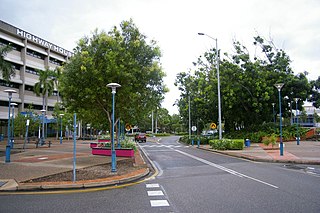
Palmerston is a planned satellite city of Darwin, the capital and largest city of Australia's Northern Territory. The city is situated approximately 20 kilometres from Darwin and 10 kilometres from Howard Springs and the surrounding rural areas. Palmerston had a population of 33,695 at the 2016 census, making it the second largest city in the Northern Territory.
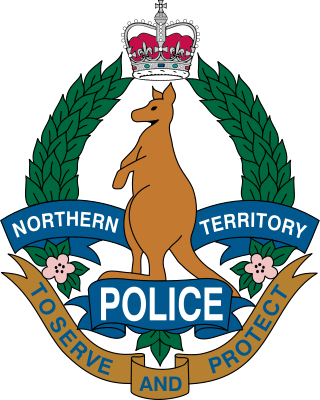
The Northern Territory Police Force is the police body that has legal jurisdiction over the Northern Territory of Australia. This police service has 1,607 police members made up of 83 senior sergeants, 228 sergeants, 912 constables, 220 auxiliaries, and 64 Aboriginal Community Police Officers. The rest of the positions are members of commissioned rank and inoperative positions. It also has a civilian staff working across the NT Police, Fire and Emergency Services.

George Woodroffe Goyder was a surveyor in the Colony of South Australia during the latter half of the nineteenth century.

Adelaide River is a small but historically significant town located at the crossing of the Stuart Highway over the Adelaide River in the Northern Territory of Australia. The town is upstream of the Adelaide and Mary River Floodplains Important Bird Area. At the 2021 census, Adelaide River had a population of 317. Adelaide River is part of the Coomalie Shire and is the second largest settlement in the local government area.

Crime in the Northern Territory is managed by the Northern Territory Police, the territory government's Department of the Attorney-General and Justice and Territory Families.
The history of Darwin details the city's growth from a fledgling settlement into a thriving colonial capital and finally a modern city.
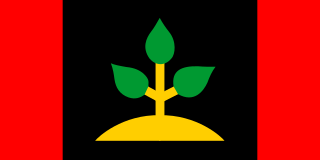
The Larrakia people are a group of Aboriginal Australian people in and around Darwin in the Northern Territory. The Larrakia, who refer to themselves as "Saltwater People", had a vibrant traditional society based on a close relationship with the sea and trade with neighbouring groups such as the Tiwi, Wadjiginy and Djerimanga. These groups shared ceremonies and songlines, and intermarried.
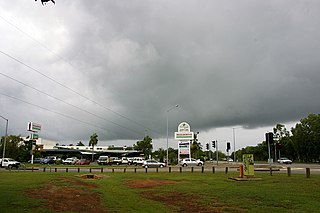
Leanyer is a northern suburb of Darwin, in the Northern Territory of Australia. It is on the traditional Country and waterways of the Larrakia people.
Southport is an outer rural locality in Darwin. It is based on the site of the abandoned Town of Southport, a thriving river port during the Pine Creek gold rush of the 1870s. It is located at the junction of the Blackmore and Darwin Rivers.

Darwin City is a suburb in metropolitan Darwin which comprises the original settlement, the central business district, parkland and other built-up areas. It is the traditional country and waterways of the Larrakia people. It is original site of occupation and includes many of the city's important institutions and landmarks, such as Parliament, Government House, the Northern Territory Supreme Court, Bicentennial Park and the George Brown Darwin Botanic Gardens. The city centre is located in the local government areas of the City of Darwin and the Darwin Waterfront Precinct.

Maurice William Holtze born in the Kingdom of Hanover, was a botanist who established Darwin's Botanical Gardens in Fannie Bay, Darwin in 1878. When he left to take charge of Adelaide's Botanic Garden in 1891, his son Nicholas was appointed curator of the Darwin Botanical Gardens in his place.
John Kerney was a South Australian criminal who adopted the sobriquet "Captain Thunderbolt", in imitation of the notorious bushranger Frederick Ward of New South Wales.
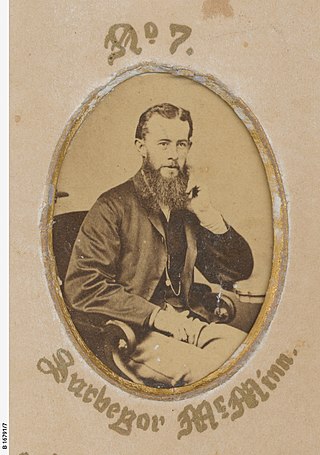
Gilbert Rotherdale McMinnCE, SM, was an Australian surveyor born in Ireland noted for his work in the Northern Territory surveying the Overland Telegraph Line. His middle name is occasionally spelt "Rutherdale".
The Oitbi were an indigenous Australian people of the Cobourg Peninsula of the Northern Territory.
The Kungarakany people, also spelt Koongurrukuñ, Kungarrakany, Kungarakan and other variants, are an Aboriginal Australian people of the Northern Territory. They were called the "Paperbark People" by European settlers.
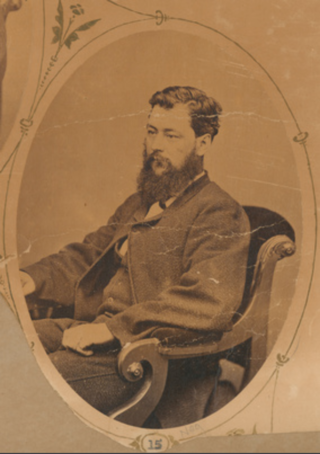
Harrison Daniel Packard was a surveyor in the early days of the colony of South Australia. He served at Escape Cliffs under B. T. Finniss, and later under G. W. Goyder at Port Darwin.
A number of survey parties were sent by the South Australian Government to the "Top End" of the Northern Territory during the years 1864–1870, preparatory to founding a settlement. This article describes those attempts and the people involved. It includes lists of all known participants.

Dolly Gurinya Batcho was a Larrakia woman from Darwin, Northern Territory and she was one of an estimated 6,000 Aboriginal and Torres Strait Islander people who worked in support of the war effort in World War II as a part of the Aboriginal Women's Hygiene Squad, 69th Australian Women's Army Service Barracks at Adelaide River.